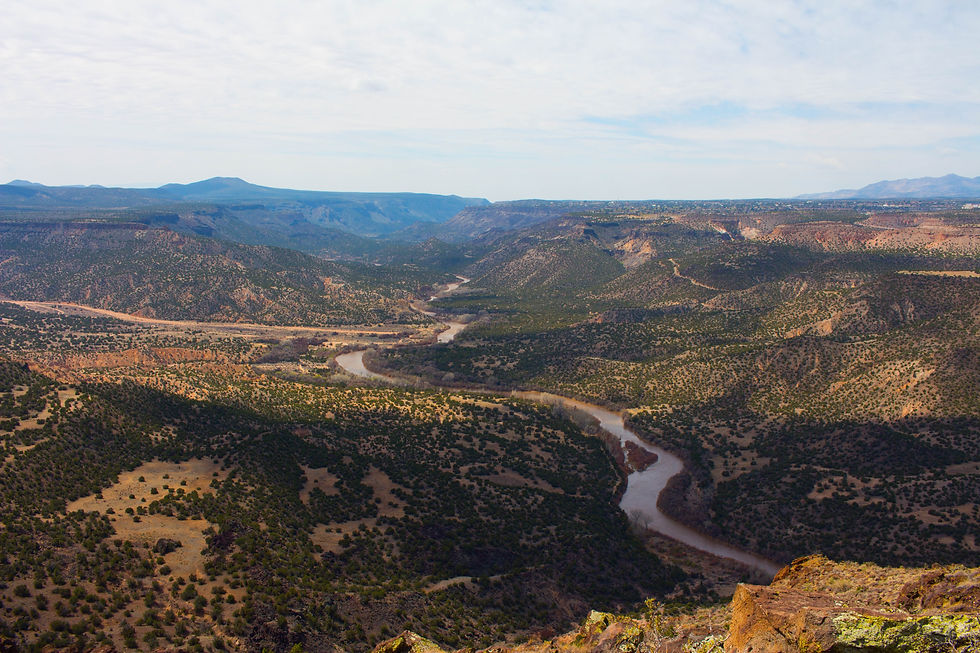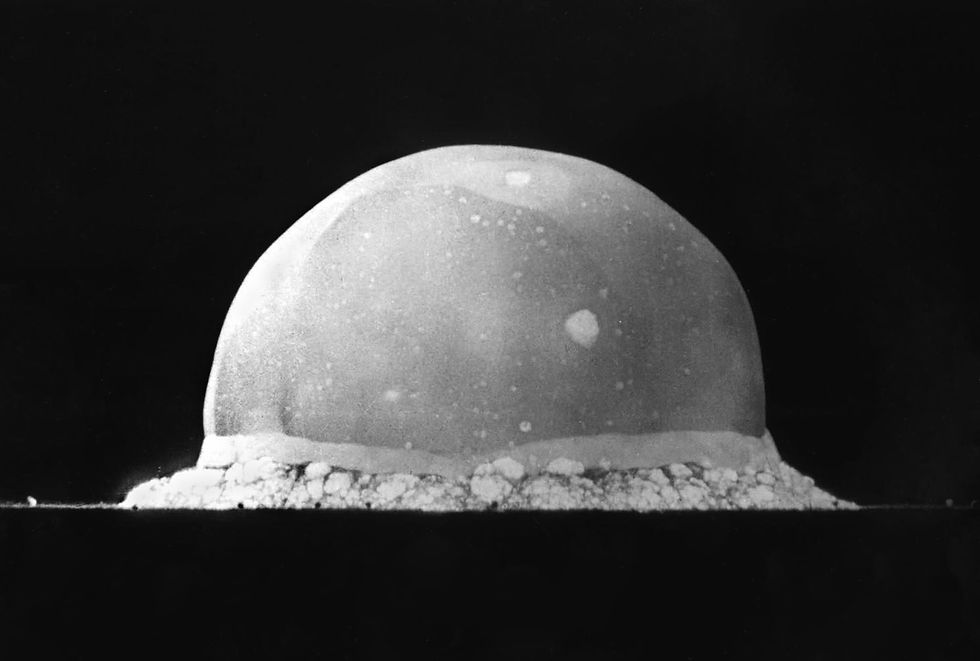Review: Oppenheimer
- EPOCH
- Sep 1, 2023
- 3 min read
Will Garbett | Lancaster University

Whether in Wrexham or Rome on 12 December 1949, you might have tuned in to Alistair Cooke’s Letter from America, a fifteen-minute monologue on the BBC World Service about life in the United States. If you liked cowboy films and the American West, you might even have listened attentively, as Cooke told the story of a trip he had made long ago.
In the summer of 1933 Cooke, then a graduate student at Yale, visited Taos, New Mexico. He was interested in the work of D.H. Lawrence, who had lived there in the 1920s. Lawrence had written a collection of essays about life – particularly the lives of indigenous peoples – and landscapes in Mexico and New Mexico. Armed with romantic ideas about literature, the wilderness, and Native Americans, the young Cooke set off from Santa Fe. He stopped off at a pueblo just short of Los Alamos, which lies about fifty miles southwest of Taos. The older, reminiscing Cooke tells the listener that he would have been horrified to find that he had been so close to the place where the first atomic bomb would be tested a dozen years later. This now obscure broadcast is remarkable for knitting together two threads in modern history – art and technology – in a single time and place – New Mexico in the mid-twentieth century.

Christopher Nolan’s Oppenheimer (2023) brings this same combination of art and science, time and place, to the box office. The shots of T.S. Eliot’s ‘The Waste Land’ and the Picassos in the opening scenes of Oppenheimer are not trivial period details. They are vital representations of an intellectual world in flux, a world responding to the end of comfortable nineteenth-century certainties and to the beginning of a fractured and fissile age subject to chaotic new energies. I went back to ‘The Waste Land’ when writing this review, with Oppenheimer in mind, and wondered what resonances the line ‘A heap of broken images, where the sun beats’ might have had with Oppenheimer. As well as the image of the Old World in ruins, of things falling apart, the line also conjures the image of the uncertain, invisible energies that shift and writhe inside our unrelenting star. This sense is perhaps better depicted by Nolan’s use of cubist art, where the image of an unclear and riven world is much more immediate. Oppenheimer, with his famous interest in Sanskrit, is the perfect avatar for this fusion of artistic and scientific thought.
We are left to wonder if Cooke’s horror at the idea of an atom bomb at Los Alamos is not only a humanitarian response to the destruction of Hiroshima and Nagasaki, but also an unstated response to the first Soviet nuclear test. The Soviet test had been made public in the United States on 23 September 1949, only twelve weeks before Cooke’s broadcast. Oppenheimer does an excellent job of conveying how unimaginable a Soviet bomb seemed at the time, but suddenly it – and the destruction of American cities – was a very real possibility.
Most people, those of us born after 16 July 1945, were born into the world of the atomic bomb. Full lifetimes have been lived in the knowledge that there are weapons that can destroy cities in a heartbeat. It is a fact of life. But Oppenheimer and Eliot and Picasso, and many others, were all writing and working in a more uncertain world, and Cooke – and his listeners – were living through it. Oppenheimer is not, just, a film about the atomic bomb. It is, primarily, a biopic. But, it is a film that does an excellent job of representing the threads between art and science that cannot be split.

Further Reading:
Kai Bird and Martin J. Sherwin, American Prometheus (London: Atlantic Books, 2023).
T.S. Eliot, The Waste Land and Other Poems (London: Faber & Faber, 2002).
Letter from America, on BBC Sounds, https://www.bbc.co.uk/programmes/b00f6hbp
D.H. Lawrence, Mornings in Mexico and Other Essays, ed. by Virginia Crosswhite Hyde (Cambridge: Cambridge University Press, 2014)
Will Garbett is a PhD student in History at Lancaster University. He works on histories of contemporary satire and popular culture.
Twitter: @will_garbett